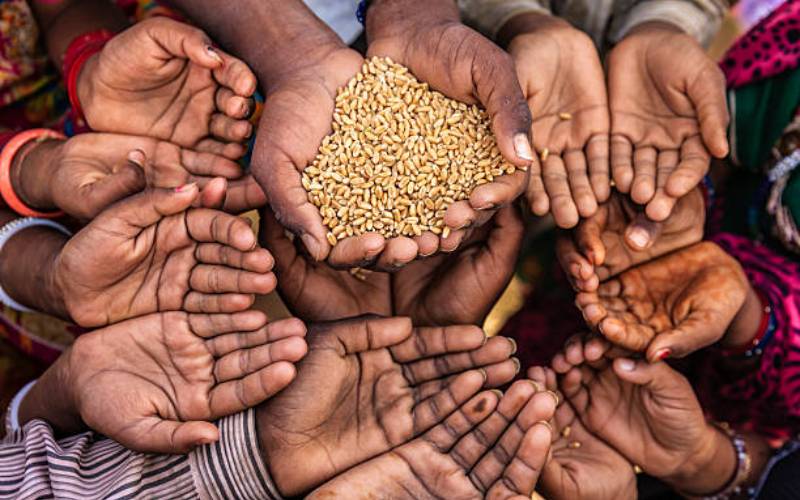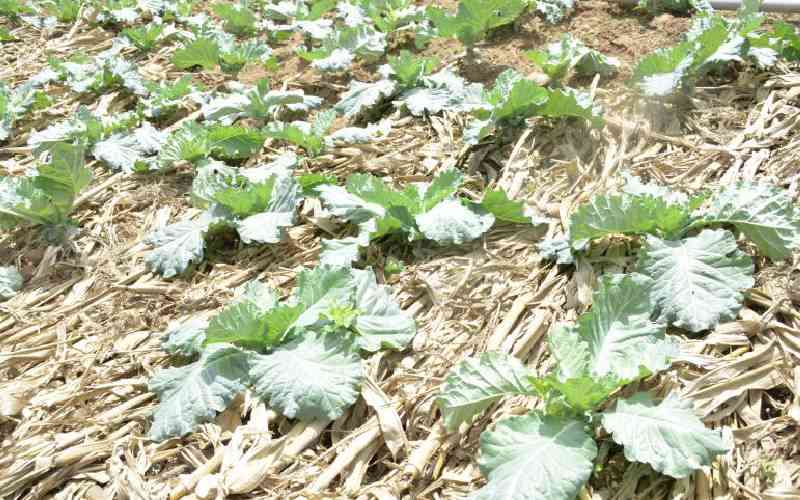
For more than 50 years, Kenya has experienced systemic hunger. In one of his speeches, the founding father of our nation, Mzee Jomo Kenyatta, committed to fight hunger, ignorance, and disease. However, almost six decades later, that is yet to be achieved.
Food availability and affordability is not only a struggle for the rural poor as we might assume. The increased mobility of people and population density means the problem has crept into cities. For example, the population of Nairobi grows by more than 4 per cent annually. It is estimated to reach over five million people in 2025. In Nairobi, only one household in five is food secure, and nearly half of all households are categorised as "food insecure with both adult and child hunger".
In 2010, Kenya took a bold step by promulgating a progressive constitution. Article 43 (1) (c) of the Constitution on social and economic rights states that "every person has a right to be free from hunger, and to have adequate food of acceptable quality" thus providing for a human rights-based approach to food security in Kenya. Despite this constitutional provision being viewed as a milestone towards realising the right to food, more than 12 million people are food insecure.
Using food as a political tool, especially around election year, and the lack of meaningful political commitment, which would be attested by the implementation of laws and policies, needs urgent attention.
A society is judged by the way it treats its most vulnerable members. In the past two months, images of stunted and malnourished children have been commonplace in our media channels. In Kenya, one out of five children's growth is stunted. According to the World Health Oorganisation, the consequences of stunting include poor cognition and educational performance, low adult wages, lost productivity, and excessive weight gain later in childhood, leading to increased risk of nutrition-related chronic diseases in adult life.
Besides stunted growth, mental illness that has been on the increase and perhaps lack of food and poor nutrition could be the reason. According to a recent study titled 'The association between food insecurity and mental health during the Covid-19 pandemic', food insecurity is associated with a 257 per cent higher risk of anxiety and a 253 per cent higher risk of depression.
Such healthcare challenges, that are gobbling huge budgets at micro and macro levels, could be averted if resources allocated to agriculture areutilised sustainably. For instance, the agriculture and health sectors, which are closely interlinked, are both devolved. However, the just-released County Governments Budget Implementation Review Report for the Financial Year 2020/21 paints a gloomy picture. According to the report, there was high expenditure on personnel emoluments, which translated to 44.2 per cent of the total spending and low spending on the development budget, which translated to an absorption rate of 62.1 per cent of the cumulative annual development budget. The stark reality is that county governments paid themselves almost 50 per cent of the total budget they received from the taxpayers and "forgot" to implement the development plan leading to the low absorption rate of the development budget.
Perhaps, if the development budget were utilised 100 per cent, we would not be reading news of Kenyans dying of hunger. With erratic rains becoming the norm, county governments should have incorporated sustainable measures to cushion citizens in rural and urban areas from hunger. This is the objective of the County Integrated Development Plan (CIDP), developed every five years and taxpayers who fund that plan expect the executives to safeguard their interests, such as the right to adequate food at all times. The CIDP, which ideally is a people-driven plan, should contain development priorities that benefit citizens such as building water pans and access roads, and should not be leveraged as a public policy tool for rent-seeking 'tenderpreneurs'.
Besides underutilisation of the development budget, decision makers at national and county levels need to realise that allocating four per cent of the overall budget to agriculture and, on average local governments spending six per cent on this crucial sector is equivalent to treating the hunger symptoms.
Such a simple process like ensuring each county ward has an extension officer who understands the ecological and social needs of the people could go a long way in solving the hunger puzzle.
The extension service officers could then equip the smallholder farmer with agroecological knowledge such as crop diversity, rainwater harvesting, and mulching, hence, averting post-harvest losses, poor nutrition, and overreliance on agro-industry for farm inputs, among other aspects of sustainable farming. Indeed, if the government dedicated adequate resources for agroecological projects and citizens were more engaged in governance such as public participation, which places powers on the people, Kenya would attain national food security.
It is distasteful for the government to keep allocating funds to programmes and projects that are not yielding nutritious meals for Kenyans. The state of hunger in Kenya has become an incurable ulcer or as aptly put in Kiswahili donda ndugu, and it is time leaders sung from the same hymnbook for Kenyans to realise the right to food as espoused in the Constitution.
 The Standard Group Plc is a
multi-media organization with investments in media platforms spanning newspaper
print operations, television, radio broadcasting, digital and online services. The
Standard Group is recognized as a leading multi-media house in Kenya with a key
influence in matters of national and international interest.
The Standard Group Plc is a
multi-media organization with investments in media platforms spanning newspaper
print operations, television, radio broadcasting, digital and online services. The
Standard Group is recognized as a leading multi-media house in Kenya with a key
influence in matters of national and international interest.
 The Standard Group Plc is a
multi-media organization with investments in media platforms spanning newspaper
print operations, television, radio broadcasting, digital and online services. The
Standard Group is recognized as a leading multi-media house in Kenya with a key
influence in matters of national and international interest.
The Standard Group Plc is a
multi-media organization with investments in media platforms spanning newspaper
print operations, television, radio broadcasting, digital and online services. The
Standard Group is recognized as a leading multi-media house in Kenya with a key
influence in matters of national and international interest.









